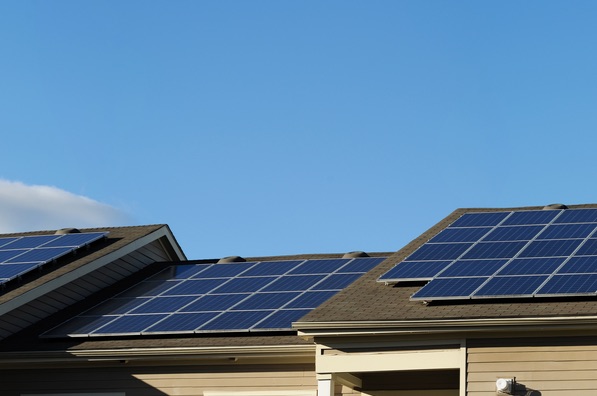Date set for brand new solar inverter requirements, with stricter controls – One Step Off The Grid
The Australian Energy Market Commission has decided that new technical standards will come into effect in December for inverters that control rooftop solar systems, battery storage and the charging of electric vehicles. Further and possibly stricter rule changes are likely to follow immediately afterwards.
The new standards, confirmed in a final decision by the AEMC on Thursday, mandate that all new inverters connected to the national electricity market must have an under-voltage breakdown to ensure that household power systems do not "trip" or Disconnect the connection if voltage disturbances occur in the network.
The change, which will apply to all jurisdictions in the NEM as of December 2021, is forward-looking rather than retroactive, which means it will apply to new and updated systems, not existing ones. By then, more than 2,000 MW of solar should have been installed on the roof across the country.
The AEMC said the December launch date aims to give manufacturers ample time to prepare for the change and addressed industry concerns that solar wholesalers and retailers would end up with redundant inventory.
“With these new standards, we can do two important things at the same time – add more new technologies to the power grid and at the same time help protect grid stability. The more stable we keep the system, the more solar energy we can connect and the faster we can decarbonise, ”said AEMC boss Benn Barr on Thursday.
“The rapid adoption of solar means that we must act now to ensure that this technology and the system used work hand in hand.
"We need to keep pace with change – nearly three million households and small businesses have adopted solar power, and the demand for household batteries and electric vehicles will increase over time."
The provision follows the publication of a draft of the updated Australian standard AS / NZS 4777.2 Grid Connection of Power Systems via Inverters, Part 2: Inverter Requirements, in December last year after an accelerated consultation and development period for the industry.
The rule change had been requested by the Australian energy market operator less than 18 months earlier when one in three AEMOs sought better control and visibility over a distributed energy resource that quickly accounted for up to 50 percent of the world's current demand – and significantly more in the grid South Australia.
Among these, AEMO had also tried to get the ability to remotely turn off inverters – as was implemented separately in South Australia – but in its draft declaratory statement in early December, AEMC stated that it had decided to focus on setting basic inverter standards in the first place as the highest priority for a rapidly changing network.
"What we're doing with this rule change is getting something into effect," said David Feeney, AEMC's Executive General Manager, Transmission and Distribution Networks, in an interview with RenewEconomy. "South Australia had the most pressing need and now we are catching one of the most pressing problems for the rest of the market."
AEMO supported this decision, but stressed in a statement in January that its next priority would be "to further develop the interoperability functionality of inverters, expand device functions to enable remote output management, query and change device settings, and various options for the coordination of DER. "
And in its statement this week, the AEMC signaled that it too is interested in tackling the “barrage of changes” that are still needed to better network solar, battery and electric vehicles on the roof built around centralized coal-fired power plants. Although this week was stressed, there has currently been no rule change for remote control of inverters submitted to the AEMC.
Other changes considered by the Commission concern electricity price structures in order to create incentives for rooftop solar households to export electricity to the grid at the times that are most needed. The Energy Security Board is also examining the issue of integrating distributed energy resources. Recommendations for the public consultation are planned for next month.
"It is imperative that we ensure that the right structures are put in place to support a completely new energy mix and power grid that looks very different from what we have relied on in the past," said Barr.
“However, we need to do this so that more people can connect, those who don't are protected, and the system as a whole works fine. This means restructuring the system, including market incentives and rules. "
To this end, the AEMC has decided to use “existing rules and industry frameworks” rather than making new agreements in order to implement changes faster and more cheaply.
"This means the standards will be able to more quickly address the concerns of the Energy Security Board and AEMO about the effects of inverter trips on the entire power grid," the statement said.
In further clarification on this point, an AEMC spokesperson stated that the Commission would also use the existing framework for embedded generator connections (EG) (per Chapter 5A of the National Electricity Rules), including the definitions of micro-embedded generators and micro-EG -Connection.
"The other thing that makes use of it are existing compliance agreements," said the spokesman. “Therefore, Distribution Network Service Providers (DNSPs) have an obligation to satisfy themselves that the Link Inverter complies with the standard.
“Device manufacturers and installers have to prove to the DNSP that the standard has been met. … (And) existing compliance and monitoring systems within the framework of the Clean Energy Council and the Clean Energy Regulator … should continue to apply.
"We didn't want to replicate these systems in a whole new way as it would be inefficient, duplicate and add cost to consumers," they said.


Comments are closed.